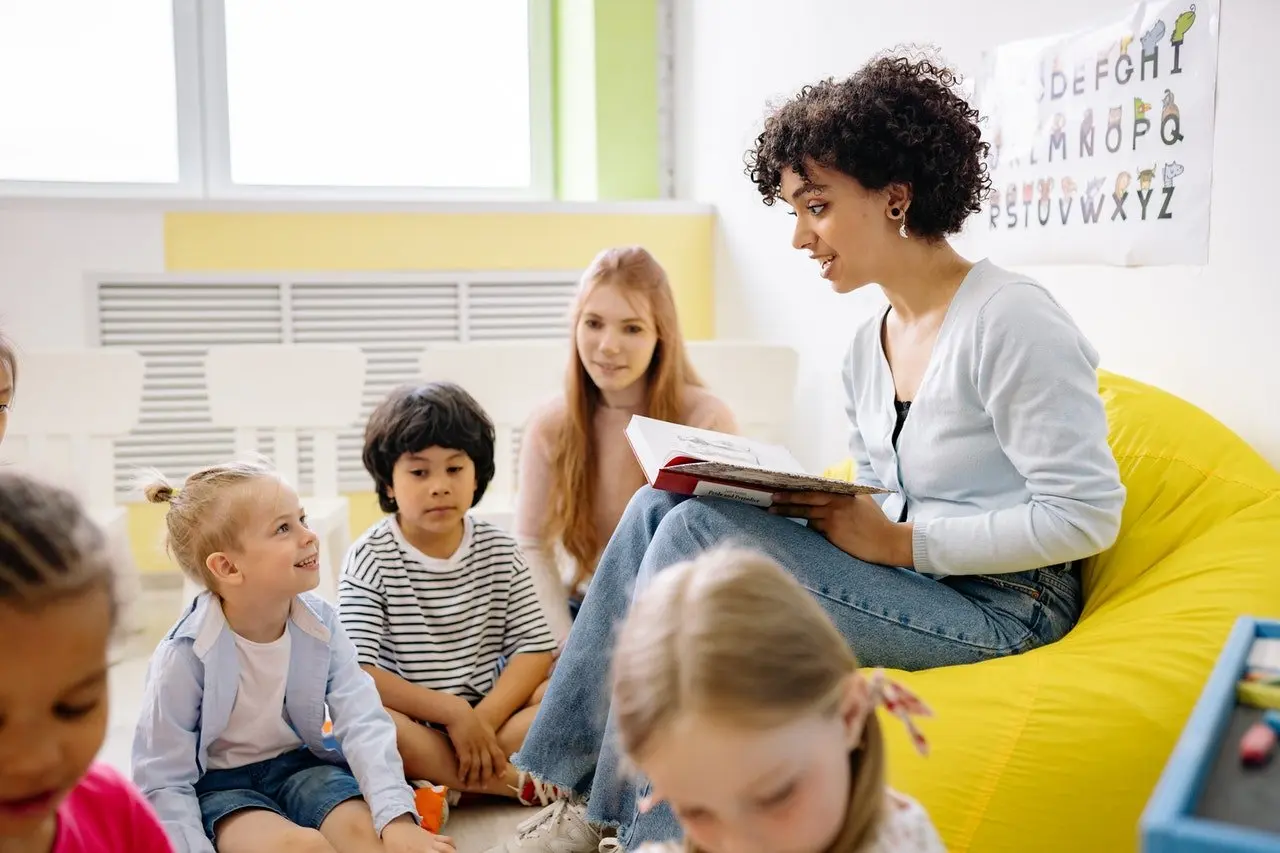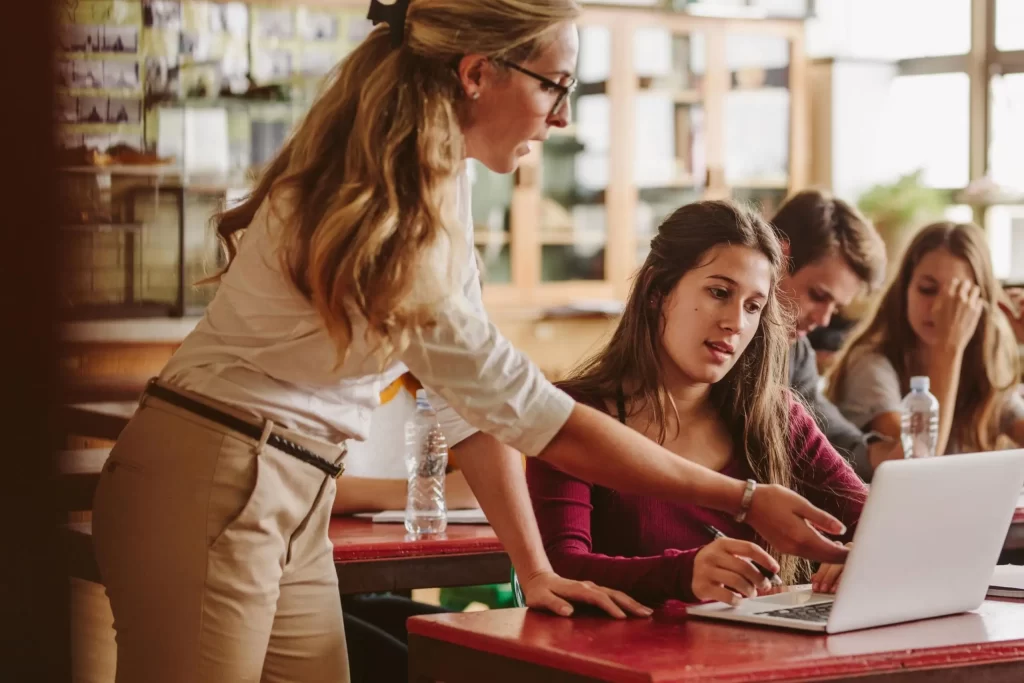In todays rapidly changing and increasingly diverse world, teaching our children to respect and value cultural diversity is essential. For educators in early childhood education, this means creating an inclusive environment that nurtures curiosity and acceptance of different people from a variety of backgrounds. Cultural diversity can help foster empathy and understanding between children, improving their overall academic performance, social-emotional health, relationships with peers as well as adults, and more. In this blog post we will explore how to bring culture into the classroom setting effectively through activities, discussions and games designed to promote cultural exchange within pupils.
Celebrate Differences
Celebrating differences and cultural diversity in early childhood education is important. It means that children of all cultures, backgrounds, and abilities can learn together. Celebrating these differences makes sure that everyone is respected and included in the classroom. It also teaches children to accept each other’s unique qualities.
Encourage Student Participation
Encouraging student participation and embracing cultural diversity in early childhood education is essential for creating a safe, supportive learning environment for all children. Encouragement of student participation creates an atmosphere where children feel seen, heard, and respected. Encouraging students to participate in the classroom can foster creative problem-solving skills and help cultivate a sense of self-efficacy.
When it comes to diversity, early childhood educators must ensure that all cultures are represented in the classroom. This entails providing a space where different backgrounds and beliefs are celebrated, not judged or discriminated against. It is important to recognize that each child brings something unique to the learning experience, which can be enhanced by incorporating multiple perspectives into the curriculum. According to studies conducted by Brown University’s Diversity Research Institute, exposing students to different cultures has been found to improve long-term academic achievement in reading, math and science.

In addition to introducing new ideas and perspectives into the classroom, cultural diversity also gives children the chance to learn about various customs and traditions from around the world. Encouraging student participation through activities such as music, storytelling and art provides an opportunity for students to gain knowledge about other cultures without feeling judged or uncomfortable. Furthermore, teachers should strive to make sure that every child feels welcome in their classroom regardless of their background or beliefs.
Early childhood educators have a unique opportunity to create safe spaces for children from all walks of life by encouraging student participation and embracing cultural diversity within their classrooms. By introducing new ideas and perspectives into the curriculum while also providing a nurturing environment for learning about different customs and traditions, teachers can help foster an inclusive climate where everyone feels accepted and valued as an individual regardless of their culture or background. Ultimately this will benefit both students’ social-emotional well being as well as their academic success in the long run.
Sources Cited
Cultural diversity in early childhood education has long been recognized as an essential element for the development of well-rounded, socially-capable children. Sources cited in research regarding this topic point to evidence that children who are exposed to a variety of cultural backgrounds and experiences have better academic success, higher self-esteem, more accepting views of diversity, and increased tolerance than those who do not. It is therefore important for educators to recognize the value of cultural diversity and strive to create environments in which all students can feel comfortable, accepted, and respected.
One source cited in particular discusses the importance of providing culturally diverse learning opportunities for young children from diverse cultures. This article suggests that teachers should recognize the different values each culture has, respect each child’s unique background, provide culturally relevant materials and books, use language appropriate to their clients’ backgrounds, and foster meaningful conversations about diversity.
Cultural Diversity In Early Childhood Education is when learning about different cultures and backgrounds helps young children develop their understanding of the world. People from different countries, cultures, religions and backgrounds can all contribute to making a classroom more interesting and diverse. Learning about cultural diversity helps us appreciate others who may be different from us.
Make Sure Your Classroom Is Welcoming
Make sure your classroom is a welcoming place for everyone. Make sure that it celebrates the different cultures of all students in early childhood education. Make sure everyone feels included and respected.
How Can We Increase Our Cultural Diversity In Early Childhood Education?
Cultural diversity in early childhood education is essential for creating a safe and nurturing environment for young learners. By exposing children to different cultures, languages, and beliefs, we can provide them with the opportunity to develop an open mind and appreciation for diverse perspectives.
One way to promote cultural diversity in early childhood education is through classroom activities that reflect the diversity of the student population. This could include introducing students to different types of music from around the world, reading stories from a variety of cultures, or celebrating holidays from various religions. For example, teachers can discuss Hanukkah with Jewish students while exploring Christmas traditions with Christian students. Additionally, they can bring in pictures or artifacts from other countries or learn about their traditional clothing and food.
Furthermore, having a diverse staff at schools will help foster an inclusive environment where all individuals feel appreciated and respected. Hiring educators who come from various backgrounds ensures that all students are represented in the classroom and can relate to their teachers on a more personal level. Understanding each other’s unique experiences broadens children’s understanding of others and helps create a more accepting atmosphere overall.
In addition to making changes inside the classroom, families should be encouraged to celebrate their cultural identities outside of school as well. Teaching kids about their own culture gives them a sense of pride for where they come from and encourages them to recognize the beauty in differences among people. Parents can also attend special events like foreign language classes or multicultural festivals that expose kids to different cultures and allow them to build relationships with those outside their immediate community.
Finally, it is important that early childhood educators understand that cultural diversity does not simply refer to race or ethnicity but encompasses religion, gender identity/expression, physical abilities, socio-economic status, language development needs, sexual orientation, ageism/generational differences, family structure configurations etc., As such it is essential that teachers remain mindful of how these multiple forms of diversity intersect one another when teaching cultural awareness curriculum or when addressing issues in the classroom setting.
Don’T Stereotype Or Generalize
In Early Childhood Education, it is important not to make assumptions about people based on their culture or group. Don’t think all people from one culture are the same – everyone is different and should be treated equally. We need to celebrate our differences and learn from each other.
Create An Environment Where Everyone Feels Safe
Creating an environment where everyone feels safe is important in early childhood education. It’s important to make sure that children of different cultures and backgrounds feel welcome and accepted. Teaching young children about cultural diversity can help them learn respect for others and be better members of their community.
How Can We Foster An Environment Where Students From Diverse Backgrounds Are Welcome And Encouraged To Participate?
We can create a welcoming environment in early childhood education where every student is accepted and encouraged to participate. We can do this by learning about different cultures, ideas, and backgrounds so that everyone feels included. This way, all students will be able to share their unique perspectives and experiences with each other.
Seek Out Diversity Experts
Seek Out Diversity Experts is a way to help children learn about different cultures. This is especially important in Early Childhood Education, which is when children learn the most. Seek Out Diversity Experts can help teach kids about culture and how it affects their lives. Cultural Diversity In Early Childhood Education helps kids understand the world around them better and create more understanding between different people.
Early childhood educators play an important role in promoting the social and emotional development of young children. By seek out experts on cultural diversity, early childhood educators can learn more about how to best support the needs of all children in their care. This is especially important in today’s increasingly diverse society. When early childhood educators have a good understanding of cultural diversity, they can create classrooms and learning experiences that are truly responsive to the needs of all children.
Conclusion
Cultural diversity in early childhood education is essential to ensure that all children have access to quality learning experiences. By creating an inclusive environment where different cultures, values, and beliefs are respected and celebrated, educators can provide a safe space for young learners to explore the world around them without fear of judgement or discrimination. Additionally, incorporating cultural diversity into curriculum helps promote critical thinking skills and encourages empathy among students. Finally, embracing cultural diversity allows teachers to create meaningful connections with their students by connecting lessons learned in the classroom with real-world scenarios from diverse backgrounds. Overall, valuing cultural diversity within early childhood education has immense benefits for both educators and students alike.
Most Helpful Videos


